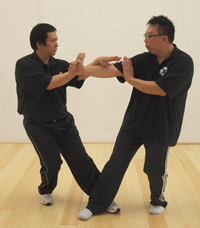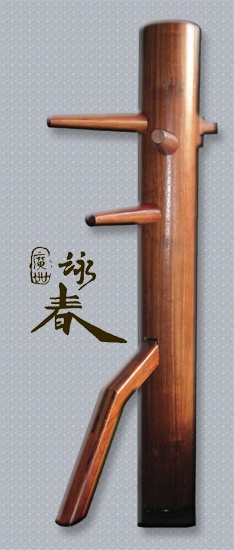|
|
|
|
| 詠春拳,相傳由伍梅師太所創,後傳與嚴詠春而得名。其後嚴詠春將此拳法傳給梁博儔,梁傳授與黃華寶及大花面錦,而兩人又將詠春拳法傳給雙刀霍保全及馮少清。霍與馮授拳與阮奇山,阮奇山傳給岑能,在岑能跟隨阮奇山學藝前,曾習技於另一詠春拳名師張寶,現在廣卅詠春拳的十二散式,源出於張寶祖師。岑能宗師桃李滿門,其弟子郭運平後將廣卅詠春從廣州帶到香港,在香港再傳授於周國泰師傅。周師傅於八零年移民加拿大前,曾返廣州研習詠春拳藝,並由岑能宗師親自指導,因而獲益良多.1985年周師傅亦再
|
|
 |
| 返廣州深造,並且居於岑能宗師府上,接受岑宗師單對單式的個別指導。周師傅從過去超過三十年的學習與教拳經驗中,總結出一種個人風格,並視宣揚廣州詠春拳為己任。
|
Wing Chun, according to legend, was invented by the nun Wu Mai, a few generations ago. It was later inherited by Yim Wing-Chun and her husband Leung Bok-Lao. With the passing of Yim, Leung named this form of martial art Wing Chun Kuen in honour of his beloved wife. Master Leung later moved to Guangzhou to continue his promotion of Wing Chun. Yuen Kay-San and Cheung Bo namely were two of the few highly respected successors of Wing Chun in Guangzhou. Sometime near the 40’s, both Master Cheung and Master Yuen took in a teenage Kung Fu enthusiast, Sum Nung, as their student. Sum Nung dedicated himself in studying Guangzhou Wing Chun and became a highly reputable Master. Today’s 12 Separate-Forms (十二散式) in Guangzhou Wing Chun is Sum Nung’s adaptation of Master Cheung’s style.
|
|
|
 |
|